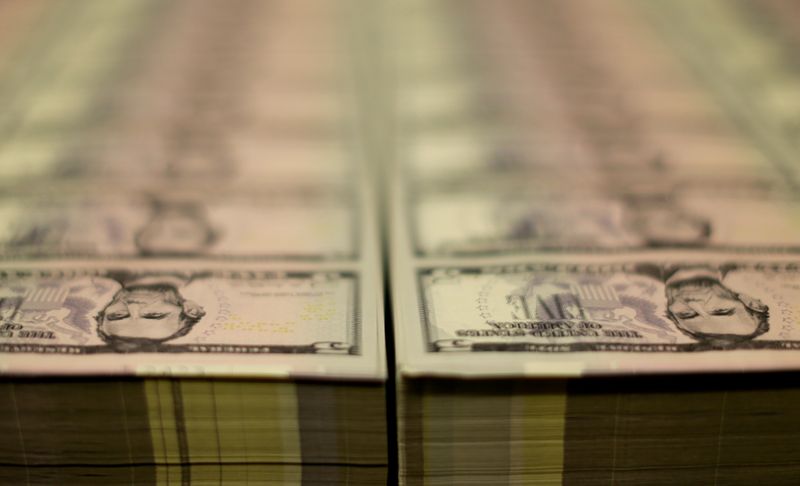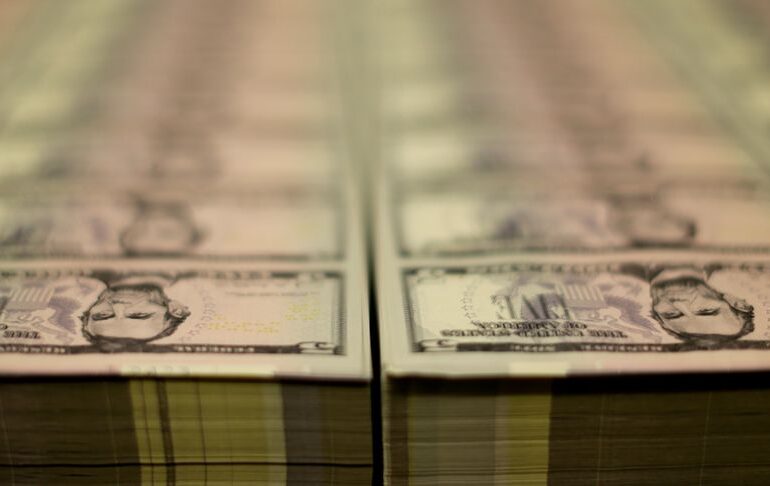
© Reuters
By Geoffrey Smith
Investing.com — The dollar steadied and pushed higher in early dealings in Europe on Wednesday, after senior Federal Reserve officials played down suggestions of an imminent ‘pivot’ in its monetary policy amid signs that the U.S. labor market is cooling down.
By 03:40 ET (07:40 GMT), the , which measures the greenback against a basket of six advanced economy currencies, was up 0.4% at 110.48, taking the edge off a fall of nearly 2% in the last week.
The dollar had slumped on Tuesday after the Labor Department reported one of the in the number of job vacancies, a relatively clear and strong signal that the Fed’s series of rate hikes this year is forcing companies to pare back their hiring plans.
However, San Francisco Fed President had told CNN after the numbers that “There’s a lot of room to slow the labor market before we get into severe recessionary conditions that people are predicting,” while Philip Jefferson, one of the recent additions to the Fed’s Washington, D.C.- based board of governors, repeated the Fed’s willingness to accept “a period of below-trend growth” as it fights to bring inflation down.
The so-called survey was the first of a series of big numbers from the U.S. labor market scheduled this week, which will culminate with the official report on Friday. In the meantime, will report its assessment of private-sector hiring in September at 08:15 ET (12:15 GMT).
“We remain skeptical that the Fed is about to pivot on the back of slightly softer U.S. data this week,” said ING analyst Chris Turner in a note to clients, saying that he expects the dollar correction to “run out of steam” no lower than 108.50. Focusing on the tight labour supply challenge, the Fed told us in September that unemployment needs to rise from its current 3.7% to 4.4% next year to prevent the Fed funds from going any higher than 4.50% to 4.75%.
The and were the two weakest of the major currencies, losing 0.5% and 0.3%, respectively, ahead of a key meeting of oil exporters in Vienna that is set to announce radical output cuts in order to support prices. As net energy importers, higher oil prices typically act as a headwind to the U.K. and Eurozone economies.
The massive increase in the cost of the Eurozone’s energy bill was evident again earlier in German trade data for August, which showed the country’s second-smallest monthly in 30 years (the smallest was posted only three months ago). There were also downward revisions to S&P’s final purchasing managers indices for all four of the Eurozone’s big economies.
The pound, for its part, also continued to struggle with the new government’s over its spending plans, an issue which may not be resolved even with Prime Minister Liz Truss’s speech to the Conservative Party conference later Wednesday.
One currency to hold its own against the dollar was the , after the Reserve Bank of New Zealand raised its by 50 basis points, as expected, to 3.50%. That contrasted with the ‘s decision to hike by only 25 basis points on Tuesday, an event that had triggered the broader rally on the dollar crosses on Tuesday by encouraging hopes of an early end to global rate hikes.
The central banks of , and all have their regular policy meetings later Wednesday.

